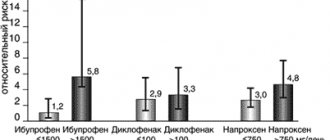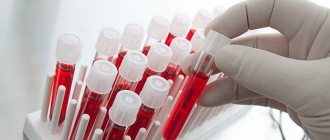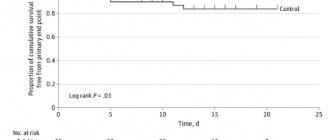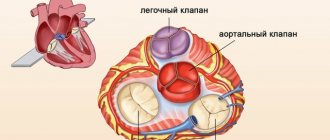Article for the “Bio/Mol/Text” competition: Bacterial resistance to antibiotics is a serious threat to human health. Due to the spread of resistance, it becomes more and more difficult to find effective treatment every year. Humanity uses antibiotics everywhere and thereby only speeds up the process. Unfortunately, resistant strains can be transmitted from one person to another, and the scale of the problem is still not fully known. Could, for example, high levels of antibiotic consumption in one country worsen the epidemiological situation in another where the government regulates the use of antimicrobials? A recent study, which we will discuss in the first part of this article, suggests that yes, it can. This means that the danger is even greater than we thought. Therefore, it is necessary to look for drugs that break the resistance mechanism itself, since there are already bacteria that cannot be stopped by almost any antibiotic. In the second part of the article, we will talk about a study that discovered new properties of already known drugs, as one of the ways to “turn off” resistance and thereby save millions of lives.
Competition “Bio/Mol/Text”-2020/2021
This work was published in the “Viruses and Microorganisms” category of the “Bio/Mol/Text” competition 2020/2021.
The general partner of the competition is the annual biotechnology conference BiotechClub, organized by the international innovative biotechnology company BIOCAD.
The sponsor of the competition is SkyGen: a leading distributor of life science products on the Russian market.
Competition sponsor: the largest supplier of equipment, reagents and consumables for biological research and production.
"Book" sponsor of the competition - "Alpina Non-Fiction"
Causes of antibiotic resistance
To understand why antibiotic resistance in bacteria is considered a problem, we need to remember its causes. Many diseases develop under the influence of viruses and bacteria that enter the body and begin to actively develop there. Such interference in the body’s vital functions can have serious consequences and sometimes lead to death. Antibiotics are powerful weapons against viruses and bacteria.
Antibiotics create conditions for bacteria in which they cannot exist. However, bacteria are living organisms and they try to protect themselves. The most effective way to protect yourself is to neutralize the effects of antibiotics
. In this fight, bacteria have one advantage: they are able to quickly divide and mutate, acquiring protective genes; after some time, the bacteria themselves begin to produce proteins and molecules that protect them, blocking the effects of the antibiotic.
The problem is that the more powerful and diverse antibiotics become, the more sophisticated and powerful defenses bacteria need to survive. All this “generational experience” is preserved and passed on, so each subsequent type of virus or bacteria turns out to be less and less vulnerable. Today there are even so-called “ superbugs”
”, which are considered incurable.
Spread of resistance: relationship with antibiotic consumption and environmental influences
Many studies support the existence of a direct relationship between increased consumption of antibiotics and the spread of bacterial resistance to their effects [2–4], [7]. In addition to the direct effect, when, due to small doses or insufficiently long use of the drug, bacteria quickly adapt to a hostile environment, there are also indirect “advantages” that the use of antimicrobial drugs gives to resistant strains: such as the elimination of competitors in the face of susceptible strains or the suppression of beneficial microflora, which helps the body cope with the infectious load.
Sometimes it happens that the consumption of antibiotics is reduced, but the level of resistance, on the contrary, only increases. For example, this happened in Iceland 20 years ago. In 2002, a study was published [8], according to which, despite a reduction in the consumption of antimicrobial drugs from 1.5 to 1.1 courses per year per child (aged one to six years), the prevalence of penicillin-resistant of pneumococci increased in the two regions most remote from the capital by four and ten times. Moreover, it increased tenfold in places where the reduction in antibiotic consumption was the most significant in the country. Although on average during this period the level of resistance in Iceland did decrease: by 5%. The authors of the study suggested that due to weak collective immunity, residents of rural regions (Fig. 3, 4) are more vulnerable to new pathogens, which first spread in large cities and only after a while reach villages. One might assume that small doses of medication or incorrect duration of therapy played a role, however, according to the study, all children received adequate treatment.
Figure 3. The settlement of Bolungarvik (Il. Bolungarvík), where the most significant increase in resistance was recorded with the most significant decrease in antibiotic consumption.
Bolungarvik
Óshólaviti
lighthouse Photographer: Herbert Ortner, Vienna.
"Wikipedia"
However, the Icelandic case remains a particular example of how resistance can be influenced by factors other than the volume of antimicrobial drug consumption. In general, antibiotic use remains one of the main reasons for the spread of resistance in the world [2–4].
Unfortunately, even if a person has never abused antibiotics, he can receive resistant microflora from someone in his immediate environment, for example, from relatives.
A study [9] based on data obtained in 1998 in two villages in Utah (Fig. 5) showed that the likelihood of acquiring both resistant and sensitive strains increased with the number of children in the family. And taking antibiotics by a child increases the number of resistant bacteria in brothers and sisters.
Figure 5. Billboard at the entrance to Utah with the state slogan: Life Elevated.
How Utah cities are pursuing 100% renewable energy
In 2021, Israeli scientists showed that mothers taking fluoroquinolones (broad-acting antimicrobial drugs) increased the risk of infection with resistant strains in children who did not take these drugs by 50% [10].
Bacteria spread not only within families, but also in other small communities where people interact closely, such as hospitals. Thus, in 2001, another research team from Israel confirmed that the use of cephalosporins and amikacin (a semi-synthetic aminoglycoside antibiotic) in six hospital departments was associated with an increased risk of infection with resistant pathogens over the following months, including in patients who did not take these drugs. antibiotics during the previous year. Moreover, among those who took this risk, this risk was 1.5–3 times higher [11].
Critically high priority level
- Acinetobacter baumannii
- Pseudomonas aeruginosa
- Enterobacteriaceae
The rating of bacteria resistant to antibiotics is deservedly headed by gram-negative microorganisms - the causative agents of most nosocomial (nosocomial) infections in intensive care units, purulent surgery and oncology. They cause infections of the skin and soft tissues, gastrointestinal tract, urinary tract, wound infections, endocarditis, meningitis, osteomyelitis. In weakened patients, bloodstream infections and ventilator-associated pneumonia are of particular importance. There are practically no reserve antibiotics left for bacteria of this group.
Acinetobacter baumannii
The “natural” habitat of A. baumannii has not been established, but these bacteria are found in hospitals around the world. Causes up to 1% of all nosocomial infections, with mortality rates ranging from 8 to 35%. A. baumannii is resistant to penicillins, cephalosporins, aminoglycosides, quinolones and tetracycline. There has been a significant increase in carbapenem resistance—more than 50% in some countries. Cases of resistance to the “last reserve” of antibacterial therapy, polymyxins, which were not previously widely used due to high nephrotoxicity, have been identified.
Combinations of antibiotics are relatively effective in the treatment of carbapenem-resistant A. baumannii: polymyxin E + rifampicin/carbapenems/quinolones/cefepime/ampicillin-sulbactam/piperacillin-tazobactam.
Pseudomonas aeruginosa
Pseudomonas aeruginosa is ubiquitous, found in soil and water, on/in plants, animals, and people. Causes up to 20% of nosocomial infections. Sensitivity to antibacterial therapy varies greatly. In severe cases, resistance to previously highly effective cephalosporins, fluoroquinolones, carbapenems, aminoglycosides, aztreonam, and piperacillin-tazobactam develops. Sensitivity to polymyxin E, as well as combinations of antibiotics, remains.
The mortality rate for infections caused by multidrug-resistant P. aeruginosa varies from 5 to 50%, depending on the patient's condition and the location of the process.
Enterobacteriaceae
From the large family of enterobacteria, the main problems in hospitals are caused by Klebsiella, Escherichia coli, Citrobacter, Salmonella, Enterobacter, Serratia, Proteus. The growing widespread decline in family sensitivity to carbapenems is of concern. Isolated cases of resistance of E. coli to all existing antibiotics, including polymyxin E, have been described.
Spread of resistance in large communities
On November 2, a study [12] by Harvard University scientists was published, which showed that the degree of spread of antibiotic resistance among the population of one region is significantly influenced by the level of their consumption in neighboring ones - more precisely, in those that interact most intensively with this region: for example, if people actively move between them. To describe such situations, the authors of the article use the term “ spillover effect ” (from the English to spill over - “to go beyond something, to spread to other areas”; the noun spillover denotes the corresponding process of “spread”).
The researchers looked at data on antibiotic consumption and the prevalence of antibiotic resistance in American states and European countries. They hypothesized that the more closely two states or countries interact, the smaller the difference in antibiotic resistance rates between them, and the direct impact of antibiotic consumption on resistance would be lower than in an ideal situation where a region is completely isolated from others.
To test the hypothesis, the scientists first used mathematical models, with which they made numerical predictions of how much the spillover effect would increase as communities interacted more intensely. And then they turned to empirical data and correlated the difference in resistance levels within regions with the intensity of their interaction with each other. The degree of intensity was determined based on data on flights by American and European airlines - scientists assumed that the fewer flights between regions, the weaker these regions interact (Fig. 6).
Figure 6. Air travel map
planefinder.net
As a result, two mathematical models used in the study - WHN and D-type (see “Transcripts” at the end of the article) - confirmed the assumption that communities that actively interact with each other have a lower difference in the level of sustainability than those that interact less. The exact values depend on the choice of model, but both suggest that just 1% more interactions between communities is enough to reduce the difference in resistance between them by a third, or even by 50% - again, depending on the choice of model.
The researchers looked at three pairs of pathogens and antibiotics: “pneumococci and macrolides,” “pneumococci and β-lactams,” and “E. coli and fluoroquinolones.” It is these combinations that have been most frequently studied before.
Scientists divided sources of information on antibiotic consumption and the spread of resistance within regions into three groups: the first two included American databases, and the third included data from European countries.
But in the end, six datasets were generated instead of nine: two were removed because data on pneumococcal resistance to β-lactams in the United States had to be excluded - in previous studies on these datasets, the relationship between the volume of antibiotic consumption and the level of resistance received a negative point estimate. In addition, information on fluoroquinolone consumption for the United States was only in the second dataset, so for this combination of pathogen and antibiotic, two datasets were collected instead of three, like the others (one European and one American).
After pairwise comparison of regions, the relationship between the intensity of the interaction and the decrease in the dependence of the level of resistance on the volume of antibiotic consumption was statistically significant in four of the six datasets. In other words, the more people moved between communities, the less impact the level of antibiotic consumption within each community had on the prevalence of resistance—neighbors began to play a significant role.
The scientists also grouped all the communities into pairs and ranked the list according to the intensity of interaction. They then compared the top 10% of pairs at the top with the bottom 10% of pairs and found that for the pairs at the top of the ranking, the association between antibiotic consumption and resistance was on average 50% weaker than for the pairs that interacted the least.
What does this data say? First of all, that the spillover effect has a significant impact on the spread of bacterial resistance to antibiotics at the level of the United States and European countries. Several important conclusions follow from this observation. First, it makes no sense to implement any policy to reduce antibiotic consumption in order to reduce the level of resistance without taking into account the situation in neighboring regions. Secondly, it is much more effective to take any measures not at the level of an individual country or state, but at the level of larger regions: the United States or the European Union as a whole. Thirdly, mass testing of antibiotics can lead to an increase in resistance within the entire control population (if it is not completely isolated from the subjects) due to the same spillover effect.
However, it is not just antibiotic consumption or interregional travel that influences the spread of resistance. Other factors may also play a role. Thus, a 2021 study showed that bacterial resistance to antibiotics increases with an increase in average annual temperature by 2–4% [13]. And according to another study, already in 2021, the spread of resistance is also influenced by socio-economic factors (Fig. 7): the better the infrastructure is developed and the higher government spending on healthcare, the lower the level of spread of antibiotic resistance [14]. Therefore, it is possible that the similarity in the level of resistance in closely interacting regions may be associated with their similarity in terms of geography or at the economic level. Also, differences in lifestyle between different social groups (divided by gender, ethnicity or economics) can be very high - perhaps comparisons between administrative units are not entirely correct, and it would be much more effective to compare different social strata [15], [ 16]. Additionally, the study did not take into account other modes of travel between regions other than air travel. It seems that people can travel over short distances more often by land transport: trains or cars, so a small number of flights between two regions does not mean their weak interaction. Therefore, to obtain an adequate picture of what is happening, it is necessary to take into account even such “little things” as the road infrastructure of the region or the cost of traveling by different modes of transport.
Figure 7. Differences in income levels among the American population by state. Economic inequality also affects the healthcare sector: people with high and low incomes have different living conditions, unequal access to medicine, etc. This may be relevant when analyzing the epidemiological situation in the region.
CNBC, picture adapted
In addition, to simplify their task, the study assumed that the relationship between antibiotic consumption and resistance levels is undeniable, and that changes in the prevalence of resistance follow changes in antibiotic consumption over a relatively short and foreseeable period time, although both of these provisions are the subject of active study. Pairwise comparison of communities also greatly simplifies the task of constructing a mathematical model and processing data. However, we must understand that in reality regions interact with each other simultaneously, and this interaction may be seasonal, or its intensity may vary depending on some social, political or environmental processes. So the theoretical calculations obtained by the researchers are quite crude and allow only a cursory idea of the problem.
Consequences
In cases where infections can no longer be treated with first-line antibiotics, more expensive drugs must be used. Longer durations of illness and treatment, often in hospitals, increase medical costs as well as the economic burden placed on families and communities.
Antibiotic resistance threatens advances in modern medicine. Without effective antibiotics to prevent and treat infections, the risk of organ transplantation, chemotherapy, and surgery such as caesarean section increases significantly.
Fighting resistance: searching for new solutions
So we've learned that antibiotic resistance is scary not only because its levels rise as antibiotic consumption increases, but also because it can spread within communities of all sizes, from families to nations. Of particular concern is the spread of multidrug resistance in some pathogens—protection against several groups of drugs at once. The fight against the threat is taking place mainly on two fronts: firstly, humanity is creating more and more new drugs that can effectively suppress resistant microorganisms, and secondly, it is coming up with ways to slow down the spread of resistance (usually by reducing the volume of antibiotic consumption) and win some time. However, this race is endless (see review [17]). How long can we “run away”?
It would be good to learn how to “turn off” resistance so that already known antibiotics can become effective “weapons” again. To do this, it is necessary to analyze the mechanisms of transmission, storage and implementation of antibiotic resistance. You can read about some of the already existing methods of combating multidrug resistance in materials [6] and [18].
Figure 8. Infographic on carbapenem-resistant Enterobacteriaceae from a report from the US Department of Health and Human Services. According to it, in 2021, there were 13,100 hospitalizations of patients with infections caused by carbapenem-resistant Enterobacteriaceae, including 1,100 deaths, and the corresponding healthcare costs in America amounted to $130 million. Carbapanem-resistant Enterobacteriaceae pose a serious problem for patients in healthcare settings: some strains have developed resistance to almost all common antibiotics, forcing doctors to resort to more toxic or less effective drugs.
[3], figure adapted
will look at how the problem of multidrug resistance can be solved, using the example of carbapenem-resistant enterobacteriaceae ( CRE , from Carbapenem - Resistant Enterobacteriaceae ). CRE can affect the genitourinary system, blood or lungs, but their main danger lies in resistance to the most serious drugs directed against them (Fig. 8). Carbapenems are the “last resort” antibiotics, that is, drugs that are used only in extreme situations when nothing else helps. CREs are often resistant not only to carbapenems, but also to many other classes of antibiotics, making them extremely difficult to treat [19]. In 2021, the US Centers for Disease Control and Prevention ranked carbapenem-resistant Enterobacteriaceae among five groups of microorganisms that should be prioritized for protection as a public health threat [3].
Figure 9. How do the DNA sequences responsible for resistance enter and store the bacterial cell? DNA sequences encoding enzymes that provide resistance can be located in plasmids—circular DNA inside bacterial cells—and transmitted as part of plasmids to descendants and relatives during conjugation. Such DNA sequences can also be transferred from the DNA of one bacterium to the DNA of another by transduction—transfer within the virus.
[5]
CRE resistance works according to the proven mechanics of Dawkins: resistance is carried by CRE resistance plasmids ( pCRE , CRE resistance plasmids ), which one would like to call selfish (Fig. 9). After all, carbapenem-resistant enterobacteria pay a high price for their invulnerability: if a cell loses pCRE, then it dies due to the toxin that was encoded in the plasmid and remained in the cell [20]. (Before the loss of pCRE, it synthesized an unstable antidote that blocked the action of the toxin.) pCREs are very large, so the number of their copies in one CRE cell can be counted on one hand. In order not to get lost during division, the pCRE encodes a mechanism for distribution to daughter cells, as well as many enzymes that “serve” the plasmid, which contains everything for its distribution and the survival of its carrier, including carbapenemase, an enzyme that breaks down not only carbapenems, but also many other β-lactam antibiotics (Fig. 10) [21]. The enzyme encoded in the plasmid “protects” its carrier. That is, first of all, it is not the bacteria that pose the danger, but the plasmid, so control methods should be directed mainly against it.
Figure 10. Destruction of the β-lactam ring by β-lactamase by hydrolysis of the bond between the carbon (gray) and nitrogen (blue) atoms.
2019.igem.org, picture adapted
Caitlin Zulaufa and James Kirby from Harvard Medical School found drugs suitable for interfering with the plasmid among those already used, but for other purposes, and tried to explain their effectiveness in combating resistant strains [22]. We think this research is important, so below we will talk about the experiments conducted by fellow scientists and the data supporting their discovery.
After screening more than 12,000 bioactive compounds, the researchers identified three that, after exposure to them, copies of pCRE did not spread in the bacterial culture during divisions, making subsequent generations susceptible to carbapenems.
Our first candidate, kasugamycin, is an aminoglycoside antibiotic that, according to the researchers, interferes with the synthesis of the RepE , which plays a key role in the propagation of pCRE through replication (duplication) [23]. That is, without RepE, the plasmid most likely will not be transmitted to new generations of bacteria. After exposure to kasugamycin for 24 hours, pCRE replication occurred more than 10 times less often (Fig. 11), compared with untreated bacteria (more than 90% of the descendants of bacteria that were resistant 24 hours ago lost protection). However, even during the application of the maximum dose of kasugamycin in this study, the plasmids still multiplied (they increased by two orders of magnitude). Let us note that kasugamycin does not completely block replication, but only greatly slows it down.
Figure 11. Dependence of plasmid propagation activity in a growing bacterial culture on the effects of drugs. On a vertical scale, the number of bacterial plasmids after incubation at different concentrations of drugs, expressed as a percentage of the number of plasmids in crops under normal conditions. The first two columns are the control experiment (without exposure to drugs): the gray column is the amount at the beginning of the control experiment; black - in bacteria after normal cultivation conditions. Green bars—after cultivation at different concentrations of kasugamycin; red bars - after cultivation at different concentrations of CGS 15943; purple bars - after cultivation at different concentrations of Ro 90-7501.
[22], figure adapted
Our second candidate, CGS 15943 (see Transcripts at the end of the article), may disrupt the readthrough of the RepE sequence. In any case, it interferes with the replication of plasmids so much that their number at the maximum dose of CGS 15943 almost did not increase (Fig. 11). Note that CGS 15943 is able to almost completely stop pCRE replication.
The third candidate - Ro 90-7501 (see "Transcripts" at the end of the article) - has the most impressive results. Looking at Figure 11, I would like to call it the “killer” of pCRE. The fact is that Ro 90-7501 is a DNA intercalator, that is, a compound that is inserted between DNA chains, “breaking” its structure and interfering with replication. Just starting the study, scientists did not want to use intercalators, because for a person the integrity of his own DNA is no less important than for a plasmid the integrity of its own. For example, the effect of the same Ro 90-7501 on mammalian cells has been recorded: it affects the assembly of amyloid β42 fibrils (associated with Alzheimer's disease) [24], the activity of the innate immune system [25] and inhibits protein phosphatase 5, an enzyme important in the regulation of key events cell life [26], [27]. However, Ro 90-7501 turned out to be selective for pCRE, and the scientists studied it particularly closely. Having stipulated that the concentration of Ro 90-7501, at which the maximum antiplasmid effect is achieved, is almost 30 times lower than toxic for mammalian cells [28].
Let's compare the drugs: CGS 15943 has no known side effects on human cells, but it does not destroy plasmids in the same way as Ro 90-7501 does. That is, after completing the CGS 15943 course, resistant pathogens can survive and reproduce again. It may be possible to change the sequence of Ro 90-7501 so that it no longer affects processes in mammalian cells. However, both drugs should “learn” from kasugamycin how to penetrate the cells of gram-negative bacteria (which include enterobacteriaceae); apparently, for their use in real conditions, it is necessary to develop a suitable method for the penetration of drug molecules into the cell.
Thus, the use of some of these drugs can lead us to victory over dangerous carbapenem-resistant enterobacteria. Scientists have a long and painstaking job to do to find or synthesize substances that will be effective in eliminating the resistance mechanism we have described.
Research like this gives us hope that we will not only be able to forever stay one step ahead by creating drugs to which bacteria have not yet developed resistance, but also “turn back the clock”—resist existing resistance mechanisms by coming up with ways to immediately stopping their action. And then the frightening figure of 10 million deaths per year will never become a reality.
Who needs antibiotic resistance?
Natural selection and evolution have not yet been canceled, which means that while people are looking for ways to fight bacteria and viruses, bacteria and viruses are looking for ways to fight antibiotics. Gradually, bacteria mutate and become resistant to antibiotics
. Other microorganisms also do the same; scientists know pathogenic viruses, fungi and protozoa that have developed resistance to antimicrobial drugs.
This is further proof that a person early felt his invulnerability, hiding behind the backs of doctors and pharmacists. The higher the resistance of microorganisms to antibiotics, the more difficult it is to treat them. A striking example is the coronaviruses that cause COVID-19.
.
The fight against COVID-19 has exposed problems that have long been discussed at the international level. In order to prevent the recurrence of similar problems on a universal scale in the future, it is necessary
:
- reduce the use of antibiotics and various antiviral and antifungal drugs;
- improve sanitation conditions in developing countries;
- solve the “water issue” so that residents of all countries have access to clean water.
antibiotic-resistant viruses and bacteria
.
Transcripts
WHN model is a model of the spread of resistance, taking into account the coexistence of antibiotic-resistant and antibiotic-sensitive bacteria in humans and their competition; proposed in 2021 [29]. D-types model is a model of the spread of resistance, taking into account the influence of the duration of carriage of resistant bacteria by people; proposed in 2021 [30]. CGS 15943 analogue of nucleosides from which DNA and other nucleic acids are built (triazoloquinazoline, more precisely, 9-chloro-2-(2-furanyl)-[1,2,4]triazolo[1,5-c]quinazolin-5-amine ), a potent antagonist of the A1 and A2A adenosine receptors with high selectivity [31], [32]. Ro 90-7501 inhibitor of amyloid fibril formation ß42 (bibenzimidazole, more precisely, 2′-(4-aminophenyl)-[2,5′-bi-1H-benzimidazole]-5-amine) [28].
The influence of pollution on the development of antibiotic resistance
The problem of antibiotic resistance began to be discussed seriously relatively recently, and then they began to study this issue and propose methods to combat it. It is known that the highest levels of resistant bacteria were found near sources of pollution: industrial and medical waste dumps, factories and farms
. The most dangerous cases are when waste from factories and factories ends up in rivers, where it is almost impossible to trace their routes and distribution.
Antibiotic resistance and medicine
The “cradle” for the emergence of microorganisms with pronounced antibiotic resistance are hospitals, where they use the same antibiotics to treat diseases. It is assumed that vancomycin-resistant enterococcus bacteria and methicillin-resistant Staphylococcus aureus bacteria have appeared somewhere within the walls of medical institutions. Wastewater discharged by medical institutions is also dangerous. Bacteria found in these waters tend to contain more resistant genes than bacteria from local sources. To reduce the risk of the spread of dangerous bacteria, which may be strains of superbugs, it is necessary to pay more attention to effective wastewater treatment and build a system of strict control over wastewater.
Antibiotic resistance and agriculture
It would seem that farms and horticultural enterprises are islands of nature in the industrial world; they should not be blamed for bacterial mutations. But it's not that simple. Animals that live on farms must undergo veterinary examinations and receive medications. Medicines for animals are very similar in composition to antibiotics
for humans, therefore, resistant bacteria can also appear in the body of animals, which then enter the environment along with feces. Animals produce much more feces than humans. Some strains of bacteria can be transmitted from animals to people, so farm and food industry workers are also at risk.
Farms, medical institutions and factories are far from the only potential sources of the emergence and spread of bacteria with pronounced resistance to antibiotics. However, even these examples are enough to understand how important it is to take care of the sanitary and hygienic conditions in which we live and work. The regional factor is also important
. The sources of spread of dangerous bacteria may be different in different areas, so steps to improve the situation must be developed and taken at both the global and regional levels.








